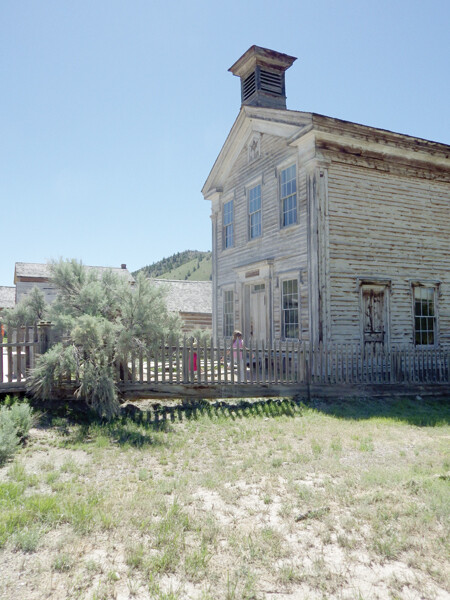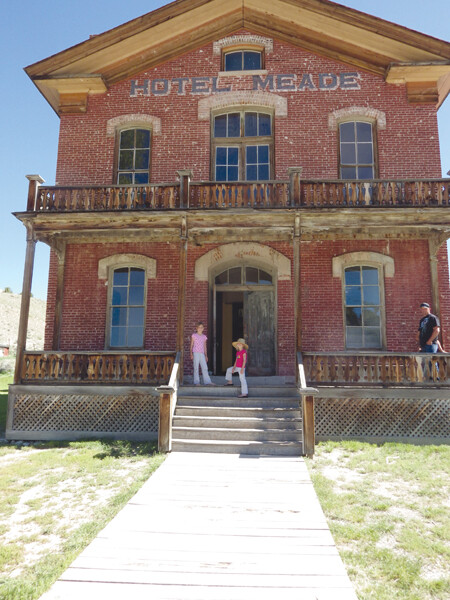A Walk Back in Time: Explore Montana’s Gold Rush Towns
When the residents of Bannack elected Henry Plummer to the position of Sheriff in May 1863, they knew virtually nothing about him. They did not know that he had been convicted of murder and done time in San Quentin prison. They did not know that he led a band of outlaws through Idaho gold fields where they robbed and murdered miners. They did not know these outlaws followed him to Montana’s first gold rush town, their town. And, they did not know that he had reorganized this motley group of villains into a gang he named “The Innocents.”
For six months after his election, The Innocents terrorized Bannack and nearby Virginia City, murdering and robbing miners and citizens. As sheriff, Plummer had inside information regarding gold shipments, which he passed along to his gang of road agents. The Innocents always evaded capture because Plummer wasn’t actually trying to catch them.
Frustrated citizens formed a vigilante group to capture Plummer and his gang in December 1863. By early January, the vigilantes arrested Plummer and some of his henchmen. Although Plummer begged for his life, he was hanged on gallows that still stand outside of Bannack.
Bannack, MT
Many of the buildings that lined Bannack’s main street when Plummer was sheriff still exist today. The gallows stand on a hillside overlooking town, and the saloon where Plummer and his gang did their dirty work sits next to the Hotel Meade. Interpretive signs lining the saloon walls describe Plummer’s life and just how dangerous the town of Bannack had been, especially after dark. Like the saloon, most of Bannack’s buildings are open to the public.
Walking up the curved staircase of the Hotel Meade, visitors get a sense of just how grand the hotel once was. Most of the buildings are empty. Old wallpaper peels from the walls, revealing old boxes and newspaper that acted as insulation. Historic remnants pepper the town and give visitors an idea of what life might have been like in this Wild West town. The bravest visitors will want to explore the Bessette House, which is rumored to be haunted by those who died while the house was used to quarantine the ill during the early twentieth century.
Kids can try an antique merry-go-round in the schoolyard, and then enter the building to sit in old desks. There is usually a lesson that would have been typical of the late 1800s written on the board. Are you smarter than a fifth grader from 1877?
Visiting Bannack is free for Montana residents. Others must pay a minimal parking fee. The Visitor’s Center sells an interpretive booklet for $2 that thoroughly describes the town’s history. Free tours run every day as well. Two campgrounds line Grasshopper Creek at the entrance to town.
Bannack Days takes place on the third weekend of July. During this event, this ghost town comes alive. Breakfast is served every day in the Hotel Meade. People dressed in costume will be demonstrating how to quilt, spin wool, craft baskets, and make wheels. Visitors will get the chance to dip candles, pan for gold, and shoot a black powder rifle. Be on your guard because a stagecoach always comes to town during Bannack Days, and just like Bannack’s residents in the 1860s, you never know when a gunfight might break out.
Virginia City, MT
Upon leaving Bannack, head through Dillon and take MT-41 toward Twin Bridges. This route will take you to MT-287 and then south to Virginia City, another of Montana’s famous gold rush towns. Citizens from Virginia City and Bannack worked together to form the vigilante group that brought down Henry Plummer and The Innocents. Today, Virginia City’s main street is lined with a mixture of old buildings and modern businesses.
Several restaurants and an ice cream shop line Main Street. Taffy is pulled every day in Cousin’s Candy Shop, where baskets of candy line the walls from floor to ceiling. Two museums provide detailed descriptions of the area’s mining history; one even contains the club foot of Plummer’s gang member, Clubfoot George Lane. The Virginia City Players and Brewery Follies provide nightly entertainment.
Unlike Bannack, the old buildings in Virginia City are not open to the public. However, many of these buildings contain historic artifacts that can be seen through the windows. Tours of the city are available by stagecoach or 1941 fire engine. A train also runs between Virginia City and Nevada City, another nearby town.
The buildings in Nevada City have been preserved as a living history museum. As you wander the paths between buildings, you are likely to see blacksmiths making horseshoes, women spinning wool and sewing, and a sheriff making sure everyone stays in line. Nevada City is also home to one of the world’s largest collections of calliopes, many of which still play if fed a few quarters.
On the Trail
Kids and adults will thoroughly enjoy a trip back in time to Montana’s famous gold rush ghost towns. From Bozeman, it takes just over two hours to reach Bannack and less than two hours to reach Virginia City. As the dog days of summer seem to stretch into eternity, a road trip to these towns will help fill the void.
To get to Bannack, take I-90 west to Whitehall; then head south on MT-55 toward Twin Bridges and Dillon. Bring your fly rod! Near Twin Bridges, the Beaverhead, Big Hole, and Ruby Rivers converge to form the Jefferson River. This route to Dillon is also along the Lewis & Clark trail, so several interpretive stops dot the highway and explain the explorers’ journey.
The route between Virginia City and Bozeman will take you past Ennis Lake, an excellent place to camp for an evening. The Madison River also provides excellent fishing and floating opportunities. If you want to fish, avoid the river between the Warm Springs fishing access and Black’s Ford. This stretch of river is a popular place to float in inner tubes, so anglers stand a better chance of catching a person than a fish.
